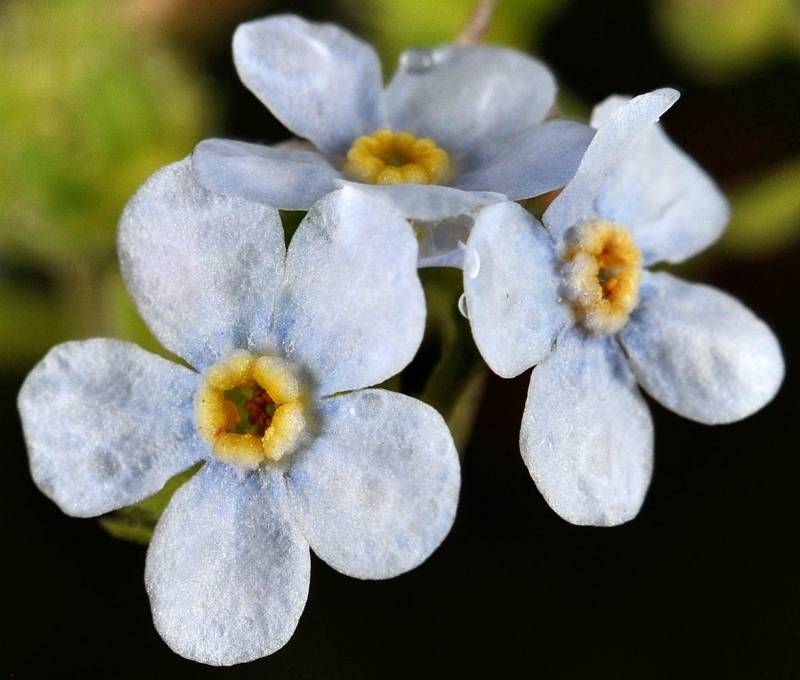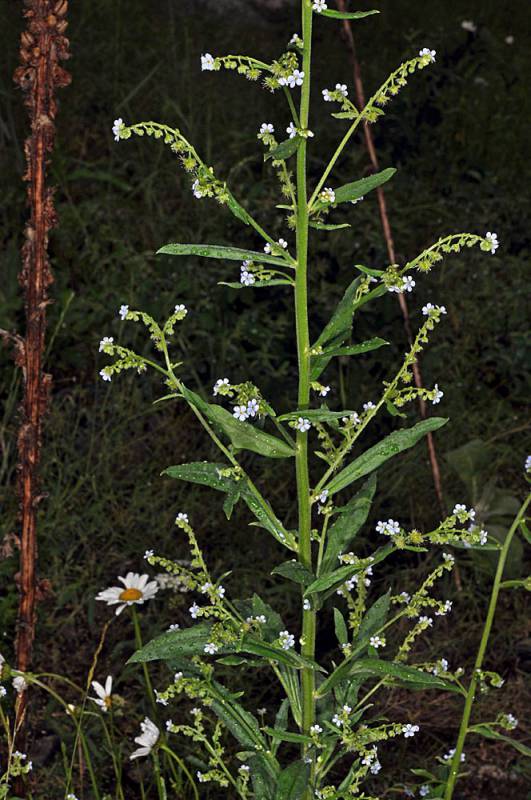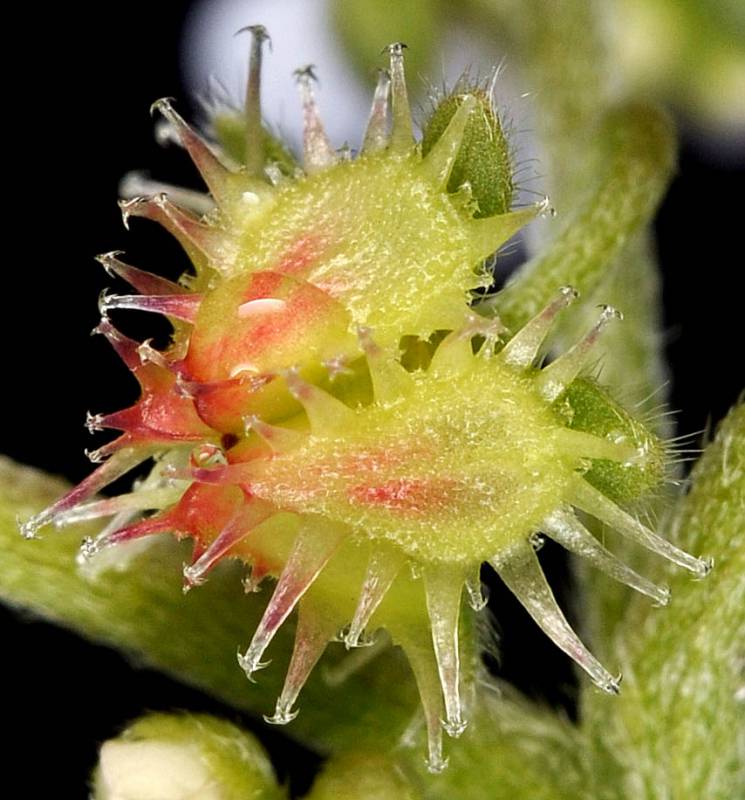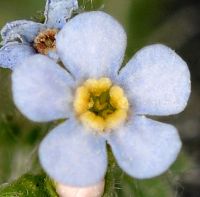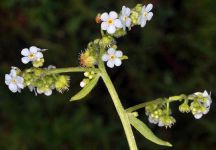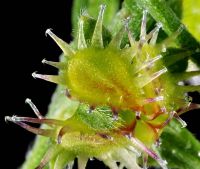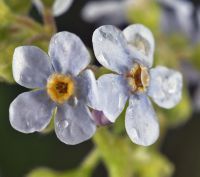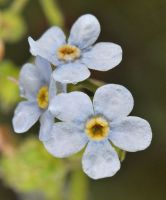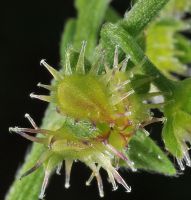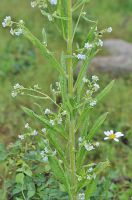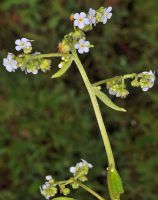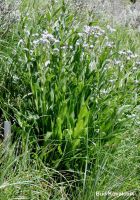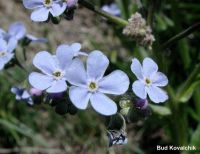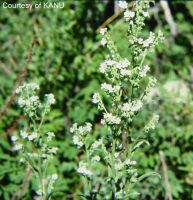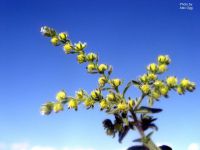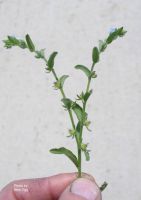Distribution: Occurring east of the Cascades crest in Washington; southern British Columbia to California, east to the Rocky Mountains.
Habitat: Thickets, meadows, stream banks and other moist places, from low elevations to mid-elevations in the mountains.
Flowers: June-August
Origin: Native
Growth Duration: Biennial, Perennial
Conservation Status: Not of concern
Pollination: Bees, flies, butterflies
Robust biennial or short-lived perennial, the stems 3-10 dm. tall, solitary or few, the upper portion with appressed, aligned pubescence, the lower with spreading hairs.
Basal leaves oblanceolate, petiolate, usually smaller than the cauline leaves and soon withering; cauline leaves well developed, numerous, 4-20 cm. long and 5-30 mm. wide, the lower oblanceolate and petiolate, the others lance-elliptic to lanceolate and sessile, gradually reduced upward.
Flowers numerous in an elongate, narrow inflorescence with ascending branches; calyx 5-lobed, split nearly to the base; corolla blue with a yellow center, the limb 4-7 mm. wide; appendages in the throat of the corolla nearly smooth.
Nutlets 4, 3-4 mm. long; marginal prickles free to the base.
Publication: Contr. Gray Herb. 68: 46. 1923.
PNW Herbaria: Specimen records of Hackelia floribunda in the Consortium of Pacific Northwest Herbaria database
WA Flora Checklist: Hackelia floribunda checklist entry
OregonFlora: Hackelia floribunda information
E-Flora BC: Hackelia floribunda atlas page
CalPhotos: Hackelia floribunda photos

